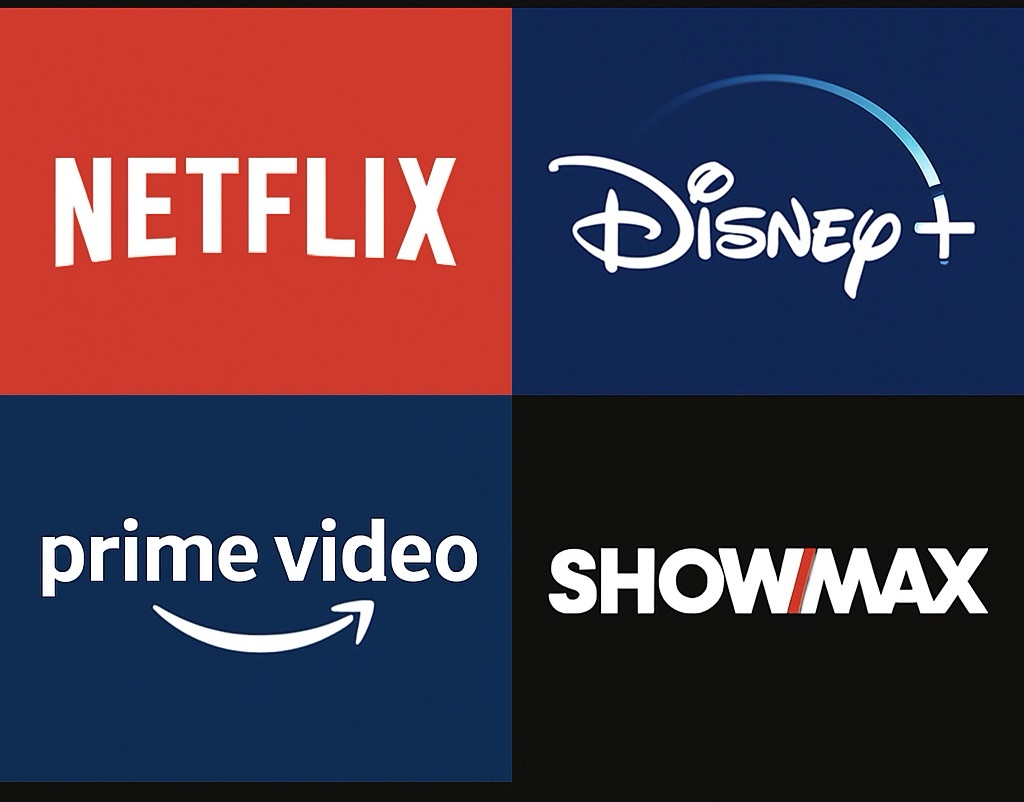The entertainment industry has never been more competitive. What started as a revolution led by Netflix over a decade ago has now transformed into a global battlefield. In 2025, streaming is no longer just an alternative to cable TV—it is the main stage. From binge-worthy series to live sports, the platforms fighting for our attention are spending billions, producing locally, and constantly experimenting with new business models.

But who’s really winning the streaming wars of 2025? Let’s dive into the fight for dominance and see how the major players are shaping the future of entertainment.
The Giants at Play
Netflix remains the titan of streaming. With over 260 million subscribers worldwide, it continues to lead with a massive library of movies, shows, and original content. In 2025, Netflix has doubled down on localized productions. Nigerian Nollywood blockbusters, Korean dramas, and Spanish thrillers now sit comfortably alongside Hollywood hits. This global-first approach has kept Netflix ahead, even as rivals close in.
Disney+, meanwhile, thrives on its powerful franchises. Marvel, Star Wars, Pixar, and Disney’s animated classics still dominate screens worldwide. But Disney+ isn’t just about nostalgia anymore—it has expanded into live-action originals, documentaries, and even international productions. In markets like Asia and Africa, Disney has started experimenting with partnerships to bring more local content.
Prime Video, powered by Amazon, is another giant in the fight. Its strength comes from bundling. For many subscribers, Prime Video feels like a free bonus attached to Amazon Prime deliveries. But don’t underestimate it—Prime Video has aggressively invested in sports broadcasting, including football leagues, UFC, and exclusive concerts. That blend of movies, shows, and live events gives Amazon a unique edge.
Showmax, although smaller globally, has carved out dominance in Africa. With localized pricing, Nollywood hits, and live Premier League matches, Showmax speaks directly to the African market in ways global platforms sometimes miss. In 2025, it is perhaps the strongest challenger to Netflix within Africa’s growing streaming audience.
What Audiences Want in 2025
The fight isn’t just about who has the most shows; it’s about who understands the audience better. Today’s viewers want three things:
1. Affordable pricing – With inflation hitting global markets, streaming platforms have rolled out ad-supported tiers. Netflix, Disney+, and Prime Video now all offer cheaper plans that run with ads, making them more accessible to younger audiences.
2. Original, exclusive content – People sign up for platforms because they don’t want to miss the latest trending show. Think about Squid Game on Netflix or The Mandalorian on Disney+. In 2025, platforms are spending billions to create “must-watch” exclusives.
3. Localized stories – From African epics to Asian romance dramas, global audiences are demanding stories that reflect their cultures. Netflix is investing heavily in Nollywood, while Showmax continues to push African originals that resonate with local viewers.
The Battle for Africa
Africa has emerged as one of the hottest markets in the streaming wars. With a young, mobile-first population and rapidly expanding internet access, the continent represents millions of new subscribers.
Netflix is investing in Nollywood productions and African documentaries, hoping to capture local loyalty.
Showmax holds a home-court advantage, offering African dramas and live football—a winning combo in many households.
Prime Video is experimenting with affordable mobile-only subscriptions, while also securing rights to popular African series.
Unlike in the U.S. or Europe, where streaming is saturated, Africa is still wide open. The platform that can blend affordability with local storytelling will dominate the future here.
The Future of Streaming
Looking ahead, the streaming wars are far from over. Here are three trends shaping the future:
1. Consolidation – Too many platforms, too little time. Industry experts predict mergers or partnerships in the coming years. Smaller platforms may struggle to survive against the giants.
2. Hybrid business models – Free with ads, premium with no ads, or pay-per-view events—streaming platforms are no longer one-size-fits-all. This flexibility helps them attract different audience groups.
3. Beyond TV – Streaming is moving into new territories: interactive content, VR experiences, and even AI-curated shows. The lines between gaming, streaming, and social media are beginning to blur.
Will Streaming Replace Traditional TV?
The question on everyone’s mind: is traditional TV dead? Not quite—but it’s fading. Sports, live events, and news were once TV’s final stronghold. Now, even those are migrating to streaming platforms. For younger generations, cable television feels outdated.
Streaming doesn’t just offer choice—it offers control. Watch anytime, anywhere, on any device. For many, that flexibility is priceless.
Final Thoughts
The streaming wars of 2025 are not about one winner taking all—it’s about who can adapt the fastest. Netflix remains the global leader, Disney+ holds the crown for franchises, Prime Video plays the bundle game, and Showmax champions Africa.
But as competition heats up, one thing is certain: audiences are the real winners. We have more content, more choices, and more flexibility than ever before.
So, which platform will dominate in your country? Drop your thoughts below—are you Team Netflix, Disney+, Prime, or Showmax?
Curious for more? Check out some of my latest articles exploring related stories and trends
SPACE MINING IN 2025: THE NEXT GOLD RUSH?
For centuries, gold rushes on Earth transformed economies and fueled dreams of fortune. But in 2025, the next great frontier for wealth may lie far beyond our planet. Space mining — the extraction of minerals and resources from asteroids, the Moon, and other celestial bodies — is no longer science fiction. With rapid advances in technology and billion-dollar investments from governments and private companies, the race to mine the stars is heating up.
Read article





Pingback: Apple’s Next Big Move: What to Expect from the iPhone 17 - BAEOLAH